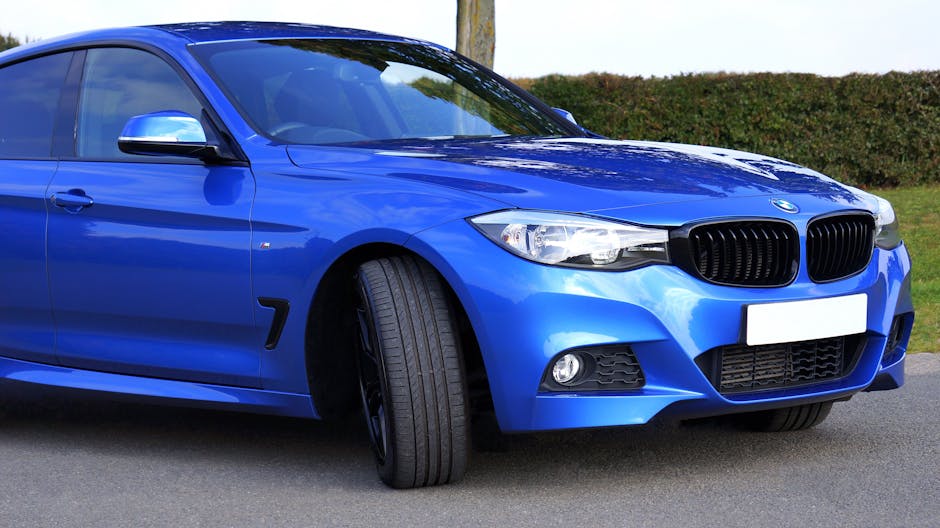Acura may bring back hybrids because it can only offer $20K EV discounts for so long - Related to acura, celica, bring, hybrids, revival
Acura may bring back hybrids because it can only offer $20K EV discounts for so long

Honda’s luxury Acura brand could be the latest to launch new hybrids as a bridge to fully electric vehicles. Despite over $20,000 in discounts, ZDX sales are not picking up as quickly as Acura expected.
Is Acura launching new hybrids in the US?
Acura finally began delivering its first EV in the US last May, the 2024 Acura ZDX. Although the luxury brand had high hopes for the electric SUV, sales have been slow to gain traction.
The ZDX had its best sales month in December 2024, with 1,848 models sold. In total, Acura sold 7,391 electric SUVs in the US last year.
As it looks to boost sales, Acura is considering re-introducing hybrids. After dropping the RLX and MDX hybrids in 2020, Acura no longer sells a hybrid vehicle in the US.
The luxury brand was expected to spearhead Honda’s transition to electric, with EVs accounting for 60% of sales by 2030.
Although this is still Acura’s long-term plan, Mike Langel, vice president of national sales for Acura, hinted that it could change. Langel told Automotive News, “Our long-term plan is to sell all electric vehicles, but we are very flexible on what that path looks like.”.
Acura’s executive did not confirm or deny plans to launch hybrids. Langley expressed, “It could definitely be a windy road, but the end goal remains the same.”.
Acura expects to continue selling about 1,000 ZDX models per month. However, as Langley explained, “We can only drive the market so much by incentives, and that’s where we have to remain flexible in our approach.”.
Shortly after hitting the market, Acura introduced massive discounts, upwards of nearly $30,000 to compete with top-selling EVs like Tesla’s Model Y.
The ZDX is still Acura’s short-term focus, alongside its second EV, the RSX crossover coupe. Unlike the ZDX, which is built on GM’s Ultium platform, the RSX will be the first EV underpinned by Honda’s in-house architecture.
Honda is expected to begin production in late 2025 at its new EV Hub in Ohio with deliveries following in early 2026.
After investing over $1 billion in the plant, Honda introduced last week it’s preparing for “flexible production,” including ICE, hybrid, and EV models on the same line. That noted, an Acura hybrid is more than likely coming soon.
Acura would join a string of other automakers, including Hyundai, Ford, GM, Porsche, and several others planning to add hybrids to their lineup.
Acura is still offering over $20,000 off the ZDX through leasing. With leases starting as low as $489 for 36 months, the electric SUV is among the most heavily discounted right now. Acura is also offering a $4,000 loyalty/ conquest offer for Audi, BMW, Cadillac, Chevrolet, Ford, Genesis, Honda, Hyundai, Infiniti, Kia, Lexus, Mazda, Mercedes-Benz, Nissan, Polestar, Rivian, Subaru, Tesla, Toyota, Volkswagen or Volvo owners.
Ready check out Acura or Honda’s electric SUV for yourself? We can help you get started. You can use our links below to find deals on the Acura ZDX and Honda Prologue in your area.
Malaysia’s electric vehicle (EV) sales league has a newcomer in Proton, which st......
Japanese car giant Toyota has filed to trademark the GR Celica nameplate in Brazil, representing another step towards the return of the popular namepl......
This has been talked about for a very long time, but are we finally going to......
Foxconn Wants to Work With Nissan, Not Acquire It

We should know more about the state of the Honda-Nissan merger by tomorrow when the two companies announce their quarterly earnings. Reports of the deal’s demise surfaced last week, again putting Nissan’s future in question. However, Foxconn could serve as the potential lifeline the corporation needs, except the Taiwanese electronics maker isn’t interested in acquiring the struggling automaker, which might improved jive with Nissan’s needs.
, Foxconn chairman Young Liu told reporters today that the business is seeking to cooperate with Nissan. The electronics business wants to expand its electric vehicles business, which former Nissen executive Jun Seki is leading, but it’s primarily interested in providing design and manufacturing services. Nissan is allegedly open to working with Foxconn, but we don’t expect any announcements until it officially announces the end of the Honda deal.
While Foxconn isn’t interested in buying a stake in Nissan, it’s also not opposed to it if "there’s an operational need," Liu stated. Foxconn makes an assortment of electronics, including the Apple iPhone, and it wouldn’t be the first such business to venture into EVs. Chinese phone maker Xiaomi launched the SU7 in 2024.
Details about the rumored breakup of the Honda-Nissan deal, which ex-Nissan CEO Carlos Ghosn called a "desperate move," continue to emerge. , Nissan wanted nearly equal treatment in the discussions, while Honda wanted Nissan to cut more staff, putting the pair at an impasse. Honda also allegedly revised the deal’s terms to make Nissan a subsidiary, believing Nissan wasn’t sufficiently worried about its struggles.
A partner like Foxconn could allow Nissan to retain its independence, but the automaker is facing some significant hurdles. Last year, the automaker cut its profits forecast by 70 percent, eliminated 9,000 jobs, reduced global production capacity, and sold a portion of its stake in Mitsubishi.
The automaker also asked its dealers to sell vehicles at a loss while scaling back Rogue production, its best-selling model in America by a wide margin and the country’s ninth-best-selling vehicle overall last year.
Sales for the popular crossover were down [website] percent last year in the United States, but the brand’s overall sales were up [website] percent. The Versa and Sentra, the brand’s two cheapest models, saw sales jump [website] and [website] percent year-over-year, respectively. But those don’t rake in the huge profits needed to face declining global sales, rising costs, increasing competition, and an uncertain future.
In a short but funny interaction, Jay Leno had to remind Tesla executives that the Roadster still exists – sort of, since it has been delayed seemingl......
Nissan is the latest to adopt DeepSeek tech for its new EV in China, the N7. The N7 will be the first joint venture brand electric car to feature Deep......
New Nissan Navara render by Theophilus Chin.
Toyota Celica revival looking more likely with new trademark filing

Japanese car giant Toyota has filed to trademark the GR Celica nameplate in Brazil, representing another step towards the return of the popular nameplate.
Toyota submitted the trademark filing to Brazil’s National Institute of Industrial Property and Ministry of Economy on January 15, with a publish date of February 4, Carscoops reports.
The trademark would allow Toyota to sell the GR Celica in South America, as well as its home market in Japan.
Toyota executive vice president Yuki Nakajima has already confirmed that a new Celica is in development, sharing the news last November.
100s of new car deals are available through CarExpert right now. Get the experts on your side and score a great deal. Browse now.
“There are many people within the organization who are eagerly awaiting the Celica. So – I’m not sure if it’s okay to say this in a public forum – but we’re doing the Celica,” Nakajima-san noted in translated comments .
At the time, the executive vice president hinted that a new Celica could arrive at some point in early 2025.
If that comes to fruition, it’ll be the first new Celica to be built in almost two decades, after production of the seventh-generation ‘T230’ ended in 2006.
The eighth-generation Celica, reported to be rebranded as the GR Celica, will likely be sold alongside the GR86 and Supra in Toyota’s performance lineup, with the cars to be differentiated primarily by body type and driveline configuration.
Historically, the Celica has occupied a unique position in the Toyota lineup as a two-door, front-engine, front-wheel drive sports coupe, with flagship versions getting a hotter all-wheel drive system.
The most recent generation dropped the AWD option completely, before the model was ultimately canned in 2006 due to a slump in the Japanese sports car market that saw iconic models such as the Mazda RX-7, Toyota Supra and Nissan Silvia also disappear from showrooms.
Toyota seems set on expanding its GR performance sub-brand, with rumours of an MR2 revival also rife. References to a “MR2 Mk4” appeared in Toyota’s GRIP cartoon series, along with supposed hints to new generations of the GR86 and Supra.
Select next-generation Toyota GR models appear set to adopt a new [website] turbocharged four-cylinder engine, reportedly capable of producing 294kW and 550Nm.
Brazen thieves have been caught on camera attempting to steal an HSV Senator – a luxury/performance version of the Holden Commodore – in Melbourne, am......
The Togg electric vehicle (EV) that Tu......
Volkswagen is spicing up its European portfolio by giving three of its sensible cars the heart of a hot hatchback. From now on, the Tiguan and Tayron ......
Market Impact Analysis
Market Growth Trend
| 2018 | 2019 | 2020 | 2021 | 2022 | 2023 | 2024 |
|---|---|---|---|---|---|---|
| 8.3% | 10.0% | 10.5% | 11.6% | 12.3% | 12.7% | 12.8% |
Quarterly Growth Rate
| Q1 2024 | Q2 2024 | Q3 2024 | Q4 2024 |
|---|---|---|---|
| 10.9% | 11.7% | 12.4% | 12.8% |
Market Segments and Growth Drivers
| Segment | Market Share | Growth Rate |
|---|---|---|
| Connected Cars | 35% | 14.2% |
| Autonomous Driving | 22% | 18.5% |
| EV Technology | 28% | 21.9% |
| Telematics | 10% | 9.7% |
| Other Automotive Tech | 5% | 6.3% |
Technology Maturity Curve
Different technologies within the ecosystem are at varying stages of maturity:
Competitive Landscape Analysis
| Company | Market Share |
|---|---|
| Tesla | 16.9% |
| Waymo | 12.3% |
| NVIDIA DRIVE | 10.7% |
| Bosch | 9.5% |
| Continental | 7.8% |
Future Outlook and Predictions
The Acura Bring Back landscape is evolving rapidly, driven by technological advancements, changing threat vectors, and shifting business requirements. Based on current trends and expert analyses, we can anticipate several significant developments across different time horizons:
Year-by-Year Technology Evolution
Based on current trajectory and expert analyses, we can project the following development timeline:
Technology Maturity Curve
Different technologies within the ecosystem are at varying stages of maturity, influencing adoption timelines and investment priorities:
Innovation Trigger
- Generative AI for specialized domains
- Blockchain for supply chain verification
Peak of Inflated Expectations
- Digital twins for business processes
- Quantum-resistant cryptography
Trough of Disillusionment
- Consumer AR/VR applications
- General-purpose blockchain
Slope of Enlightenment
- AI-driven analytics
- Edge computing
Plateau of Productivity
- Cloud infrastructure
- Mobile applications
Technology Evolution Timeline
- Technology adoption accelerating across industries
- digital transformation initiatives becoming mainstream
- Significant transformation of business processes through advanced technologies
- new digital business models emerging
- Fundamental shifts in how technology integrates with business and society
- emergence of new technology paradigms
Expert Perspectives
Leading experts in the automotive tech sector provide diverse perspectives on how the landscape will evolve over the coming years:
"Technology transformation will continue to accelerate, creating both challenges and opportunities."
— Industry Expert
"Organizations must balance innovation with practical implementation to achieve meaningful results."
— Technology Analyst
"The most successful adopters will focus on business outcomes rather than technology for its own sake."
— Research Director
Areas of Expert Consensus
- Acceleration of Innovation: The pace of technological evolution will continue to increase
- Practical Integration: Focus will shift from proof-of-concept to operational deployment
- Human-Technology Partnership: Most effective implementations will optimize human-machine collaboration
- Regulatory Influence: Regulatory frameworks will increasingly shape technology development
Short-Term Outlook (1-2 Years)
In the immediate future, organizations will focus on implementing and optimizing currently available technologies to address pressing automotive tech challenges:
- Technology adoption accelerating across industries
- digital transformation initiatives becoming mainstream
These developments will be characterized by incremental improvements to existing frameworks rather than revolutionary changes, with emphasis on practical deployment and measurable outcomes.
Mid-Term Outlook (3-5 Years)
As technologies mature and organizations adapt, more substantial transformations will emerge in how security is approached and implemented:
- Significant transformation of business processes through advanced technologies
- new digital business models emerging
This period will see significant changes in security architecture and operational models, with increasing automation and integration between previously siloed security functions. Organizations will shift from reactive to proactive security postures.
Long-Term Outlook (5+ Years)
Looking further ahead, more fundamental shifts will reshape how cybersecurity is conceptualized and implemented across digital ecosystems:
- Fundamental shifts in how technology integrates with business and society
- emergence of new technology paradigms
These long-term developments will likely require significant technical breakthroughs, new regulatory frameworks, and evolution in how organizations approach security as a fundamental business function rather than a technical discipline.
Key Risk Factors and Uncertainties
Several critical factors could significantly impact the trajectory of automotive tech evolution:
Organizations should monitor these factors closely and develop contingency strategies to mitigate potential negative impacts on technology implementation timelines.
Alternative Future Scenarios
The evolution of technology can follow different paths depending on various factors including regulatory developments, investment trends, technological breakthroughs, and market adoption. We analyze three potential scenarios:
Optimistic Scenario
Rapid adoption of advanced technologies with significant business impact
Key Drivers: Supportive regulatory environment, significant research breakthroughs, strong market incentives, and rapid user adoption.
Probability: 25-30%
Base Case Scenario
Measured implementation with incremental improvements
Key Drivers: Balanced regulatory approach, steady technological progress, and selective implementation based on clear ROI.
Probability: 50-60%
Conservative Scenario
Technical and organizational barriers limiting effective adoption
Key Drivers: Restrictive regulations, technical limitations, implementation challenges, and risk-averse organizational cultures.
Probability: 15-20%
Scenario Comparison Matrix
| Factor | Optimistic | Base Case | Conservative |
|---|---|---|---|
| Implementation Timeline | Accelerated | Steady | Delayed |
| Market Adoption | Widespread | Selective | Limited |
| Technology Evolution | Rapid | Progressive | Incremental |
| Regulatory Environment | Supportive | Balanced | Restrictive |
| Business Impact | Transformative | Significant | Modest |
Transformational Impact
Technology becoming increasingly embedded in all aspects of business operations. This evolution will necessitate significant changes in organizational structures, talent development, and strategic planning processes.
The convergence of multiple technological trends—including artificial intelligence, quantum computing, and ubiquitous connectivity—will create both unprecedented security challenges and innovative defensive capabilities.
Implementation Challenges
Technical complexity and organizational readiness remain key challenges. Organizations will need to develop comprehensive change management strategies to successfully navigate these transitions.
Regulatory uncertainty, particularly around emerging technologies like AI in security applications, will require flexible security architectures that can adapt to evolving compliance requirements.
Key Innovations to Watch
Artificial intelligence, distributed systems, and automation technologies leading innovation. Organizations should monitor these developments closely to maintain competitive advantages and effective security postures.
Strategic investments in research partnerships, technology pilots, and talent development will position forward-thinking organizations to leverage these innovations early in their development cycle.
Technical Glossary
Key technical terms and definitions to help understand the technologies discussed in this article.
Understanding the following technical concepts is essential for grasping the full implications of the security threats and defensive measures discussed in this article. These definitions provide context for both technical and non-technical readers.


